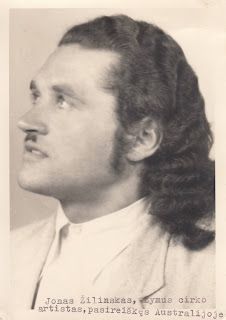The Australian Government had an agreement with the International Refugee Organisation to settle at least 12,000displaced persons a year, from camps in Europe. In exchange for free passage and help on arrival, new post WWII migrants agreed to work for the government for two years.
Between 1947 and 1953 the Australian Government assisted over 170,000 Displaced Persons to migrate to Australia.
All assisted migrants aged over 16 had to work. Regardless of qualifications men were classified as labourers and women as domestics.
So, what did they actually do?
The men were often sent to remote country places to work on the railways, work in the forest industry, cutting cane, building dams or work in mining.
Here is a list of some places, certainly not all and with names attached if known. If you can add places, please comment below.

New South Wales
Potts Hill (Water Board Camp) Sydney
From October 1948 a tent city grew 430 men from various nationalities. Amongst them 75 Lithuanians. By the camp gates a notice in German reads ‘Entry of women is prohibited’. Many married men live here, some wives work in Sydney and could only meet out on the road.
Two men live in each tent, there is a floor, two beds, small table and electricity. Food is made by yourself with electric frying pan, washing done yourself, in the laundry. There are showers.
Work included laying pipes and sewers. They earn 17-21 pounds per fortnight, of which they pay 2.6 for living in the camp. There is no large building as yet.
https://www.mhpillawarra.com.au/index.php/migrant-hostels-in-wollongong/item/105-the-balts-camp
Warragamba Dam, New South Wales
Metropolitan Water Sewerage and Drainage Board project, Warragamba river which provides water supply to Sydney. A large-scale operation that has meant the establishment of its own town, houses with modern facilities. Unmarried workers get a bed in a dormitory at a cost of 4 shillings per day. New arrivals get to stay in tents until a house becomes available. There is a communal refectory, but one can choose to make your own food. There is post, some shops, cinema that shows films three times per week.
Surrounding area is a eucalyptus forest, three miles long ending Wallacia where there is a hotel, shops and restaurant. The closest train station is Penrith, 16 miles away. From there to Sydney is another 30 miles. Come the weekend the town empties of men making there way to Sydney for the weekend.
Work varies, constructing barracks, excavating soil, digging tunnels, blowing rocks and concreting. Work week is 40 hours, some areas they work in three shifts. Earn 8-10 pounds in a week depending on the work.
The first Balts arrived on 16 June 1948, four Lithuanians. Now ten Lithuanians at the dam and four at the Mulgoa camp. It is difficult to meet up as they work odd times. The works is said to take ten years. The town keeps growing and 3,000 workers will be here, mostly migrants from Europe. The dam has been renamed DiPi Dam.
Waterboard requested 200 Balts to work on the dam.
Juozas Matikovas
Vincas Melnikas
Breadalbane, New South Wales
Gediminas Peciulevicius
Bronius
Tirilis
Waronora Dam, via Waterdall, Sydney
Alfonsas Praninskas
Western Australia
Bunbury, Western Australia
Main Road Board
Ten Lithuanians and two friendly Estonians. Living near the Bunbury forest in tents. Repairing roads, the work is not hard. Fortnight wage is around 14 pounds.
Everything they do themselves, cooking and cleaning. Vytautas is the cook who also has a radio. The evenings are spend listening to the radio, news from Europe. They receive newspapers from Germany in Lithuanian which they read and pass around. Thinking of constructing a basketball court.
Bunbury and Manjumup Pemberton Brick Yards 20 Balts
Martynas Janulis
J. Jonaitis
Simas Povilaitis
More to come.




